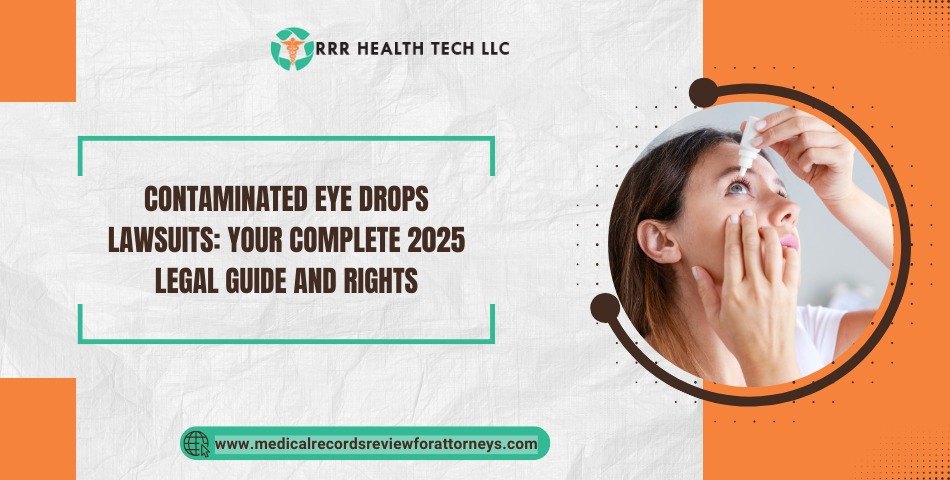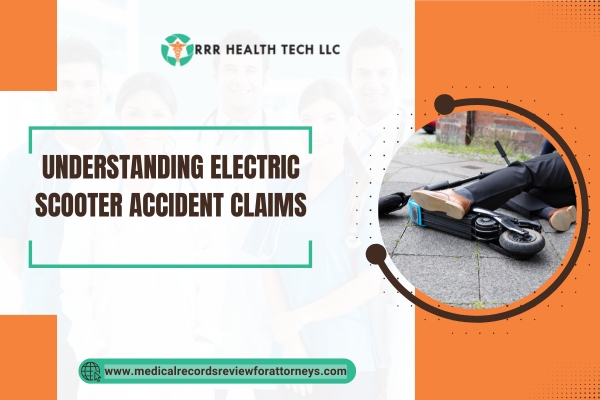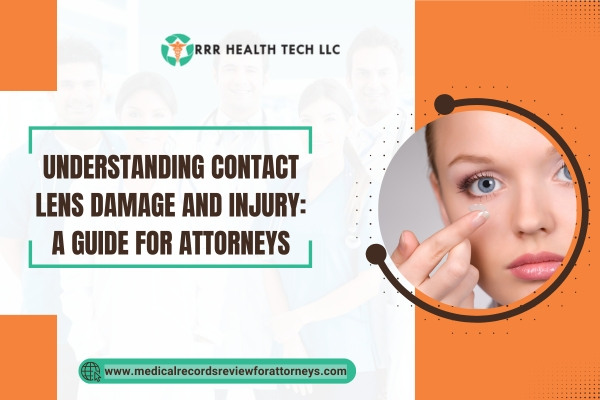
In a shocking turn of events, what millions of Americans trusted as a simple over-the-counter remedy became a source of severe health risks. The unprecedented wave of contaminated eye drop recalls in 2023 exposed critical safety failures in the pharmaceutical industry, leading to at least four deaths and numerous cases of permanent vision loss.
The aftermath has sparked a surge in legal actions, with affected consumers seeking justice through various channels. As manufacturing violations continue to surface, particularly in facilities across India, the landscape of eye drop safety and consumer protection has fundamentally shifted, creating new pathways for compensation.
Overview of Recent FDA Contaminated Eye Drops Recall Lawsuits
In October 2023, the FDA announced a major recall affecting 27 eye drop products due to potential contamination risks. The recall included products from several major retailers and manufacturers, including CVS Health, Leader, Rugby, Rite Aid, Target, and Velocity Pharma LLC.
The FDA’s action stemmed from concerns about product sterility and the risk of severe eye infections that could lead to vision loss. The agency directed consumers to stop using these products immediately and return them to the point of purchase.
This recall followed several other eye drop safety alerts throughout 2023, pointing to ongoing quality control issues within the industry. Tests revealed unsanitary conditions at manufacturing facilities, particularly those located in India, where many of these products originate.
Consumers who purchased affected products should check the FDA’s recall list, retain product packaging and receipts, and contact their healthcare provider if they experience symptoms such as eye pain, redness, or changes in vision.
Health Risks of Contaminated Eye Drops
The use of contaminated eye drops poses serious health threats, with documented cases of severe eye infections leading to permanent vision loss and blindness. At least four deaths have been linked to tainted eye drops since 2023.
Users may experience several warning signs, including:
- Intense eye pain
- Blurred or decreased vision
- Heightened sensitivity to light
- Redness around the eye area
- Unusual discharge
Medical experts stress that these symptoms require immediate medical attention, as infections can spread beyond the eye if left untreated. The bacteria found in contaminated drops can cause aggressive infections that may damage eye tissue permanently.
Patients who have used recalled products should maintain detailed records of their symptoms and medical visits. Those experiencing vision problems after using eye drops should inform their healthcare provider about which specific product they used and when symptoms first appeared.
Legal Implications for Consumers
Consumers affected by contaminated eye drops may qualify to file legal claims against manufacturers and retailers. Personal injury claims and product liability lawsuits represent the main legal paths for seeking compensation. Law firms specializing in defective medical products can assess cases and gather essential documentation.
Affected individuals must choose between joining class action lawsuits or filing individual claims. Class actions combine multiple similar cases, while individual suits allow plaintiffs to pursue specific damages based on their unique circumstances.
Supporting evidence plays a central role in these cases. Required documentation includes:
- Medical records showing eye infections or vision problems
- Proof of product purchase through receipts
- Original product packaging
- Treatment records and medical expenses
- Documentation of lost wages
- Photos of eye injuries or conditions
Law firms offer free case evaluations to determine eligibility for compensation. The time limit for filing claims varies by state, making prompt legal consultation important for protecting one’s rights.
Insights into Manufacturing Site Conditions
FDA investigations have identified serious safety violations at eye drop manufacturing facilities, with notable concerns centered on production sites in India. Inspectors found multiple breaches of safety protocols, including falsified test results and poor protective measures during production.
Reports detail specific problems at these facilities:
- Lack of proper sterilization procedures
- Inadequate testing of raw materials
- Poor quality control measures
- Insufficient employee safety protocols
- Compromised production environments
The FDA documented “insanitary conditions” at several facilities, leading to immediate production halts. These findings prompted increased oversight of international manufacturing operations and stricter enforcement of safety standards.
These violations highlight systemic problems within the eye drop manufacturing industry. Regulatory bodies have responded by implementing more frequent inspections and demanding improved documentation of safety procedures. The findings have also led to discussions about strengthening international manufacturing standards and increasing penalties for safety violations.
Steps for Affected Consumers to Claim Compensation on Contaminated Eye Drops Lawsuits
Filing a legal claim for contaminated eye drops requires careful documentation and timely action. Consumers should start by collecting:
- Complete medical records showing eye infections or injuries
- All receipts and proof of purchase
- Original product packaging and containers
- Photos of eye conditions or symptoms
- Records of medical expenses and treatments
- Documentation of missed work and lost income
The time limit for filing claims differs by state, making quick action essential. Most states allow 2-3 years from the date of injury to file a claim.
Potential compensation may cover:
- Medical bills and ongoing treatment costs
- Lost wages from missed work
- Pain and suffering
- Long-term disability
- Future medical care
Consumers should keep a detailed log of all symptoms, medical visits, and related expenses. This documentation strengthens the connection between product use and injury, which is vital for successful claims.
Guidance on Seeking Legal Consultation
Law firms offer several pathways to assess your eligibility for contaminated eye drop claims. Online assessment tools provide initial screening, while direct consultations with attorneys offer detailed case evaluation at no cost.
To start the legal process:
- Complete online case screening forms
- Schedule a free consultation with product liability attorneys
- Prepare your documentation for review
- Ask about the firm’s experience with similar cases
Legal representation brings specific advantages for eye drop cases:
- Knowledge of FDA regulations and recall procedures
- Experience calculating appropriate compensation
- Understanding of medical evidence requirements
- Skills in negotiating with manufacturers and retailers
When selecting an attorney, look for:
- Past success with medical product cases
- Clear communication about fees and timelines
- Resources to handle complex litigation
- Access to medical experts and investigators
Most firms operate on contingency fees, meaning they only receive payment if they win your case. This arrangement allows affected individuals to pursue legal action without upfront costs.
Regulatory and Legal Landscape
The FDA strengthened its eye drop oversight in 2023, implementing stricter monitoring protocols and enforcement actions. These changes affected both domestic manufacturers and international suppliers, particularly those operating in India.
Legal experts note several key factors in contamination cases:
- Proving direct links between eye drops and infections
- Establishing timeline of product use and symptom onset
- Documenting manufacturing defects
- Demonstrating failure to meet safety standards
Expert witnesses play a vital role in these cases, including:
- Medical professionals who treated affected patients
- Manufacturing specialists who can identify safety violations
- Laboratory technicians who tested contaminated products
- Regulatory compliance experts
Courts examine previous product liability cases involving medical products to guide current litigation. However, eye drop cases present unique challenges due to:
- Multiple potential contamination sources
- Varied patient reactions to infections
- Complex international supply chains
- Different regulatory standards across countries
The FDA continues updating its enforcement strategies based on findings from recent recalls and investigations.
Manufacturer and Retailer Liability
Product liability cases involving contaminated eye drops often target both manufacturers and retailers. Manufacturers bear primary responsibility for product safety, quality control, and sterility testing. However, retailers may share liability if they failed to properly store products or ignored FDA safety alerts.
Legal obligations of manufacturers include:
- Maintaining sterile production environments
- Conducting safety tests
- Following FDA manufacturing guidelines
- Promptly reporting safety concerns
- Initiating recalls when needed
Retailers must:
- Remove recalled products from shelves
- Notify customers of recalls
- Store products according to specifications
- Monitor FDA safety notifications
- Maintain proper documentation
Courts assess liability based on:
- Level of control over product safety
- Knowledge of contamination risks
- Response time to FDA warnings
- Documentation of safety measures
- Compliance with recall procedures
These cases often lead to changes in industry practices, including enhanced testing requirements, stricter storage protocols, and improved tracking systems. Legal outcomes frequently establish new standards for product safety and consumer protection.
Final Considerations
The contaminated eye drops crisis has reshaped consumer protection standards in the pharmaceutical industry, forcing manufacturers and retailers to confront their responsibilities to public safety. As legal proceedings continue to unfold, affected individuals have multiple avenues for seeking justice and compensation for their injuries.
Those impacted by contaminated eye drops should act promptly to protect their rights, gathering necessary documentation and seeking appropriate legal counsel. The evolving landscape of these cases continues to establish new precedents for product liability and consumer protection in the pharmaceutical sector.


